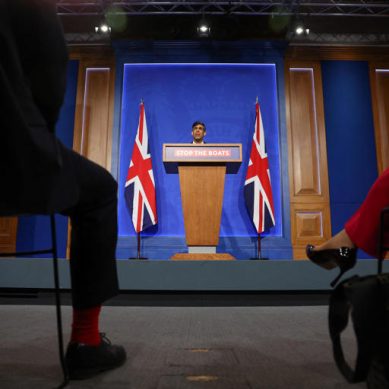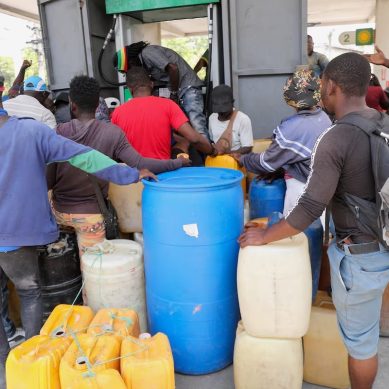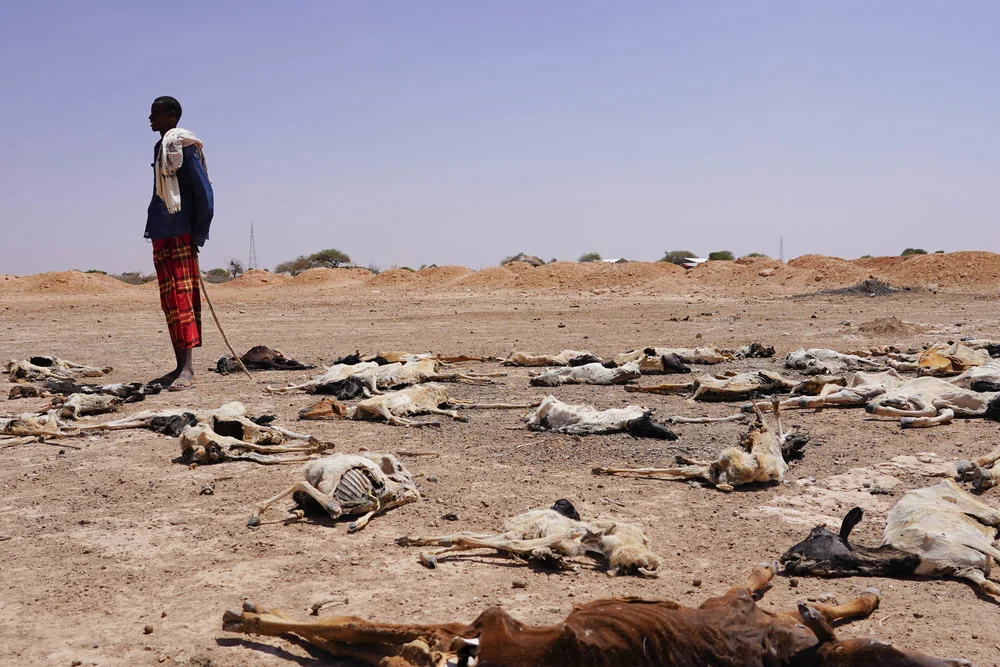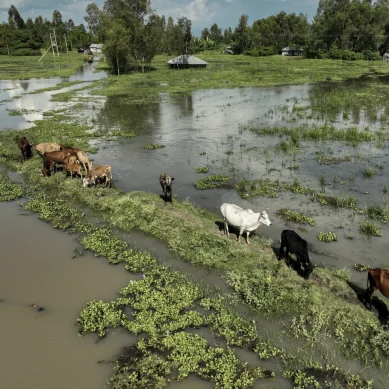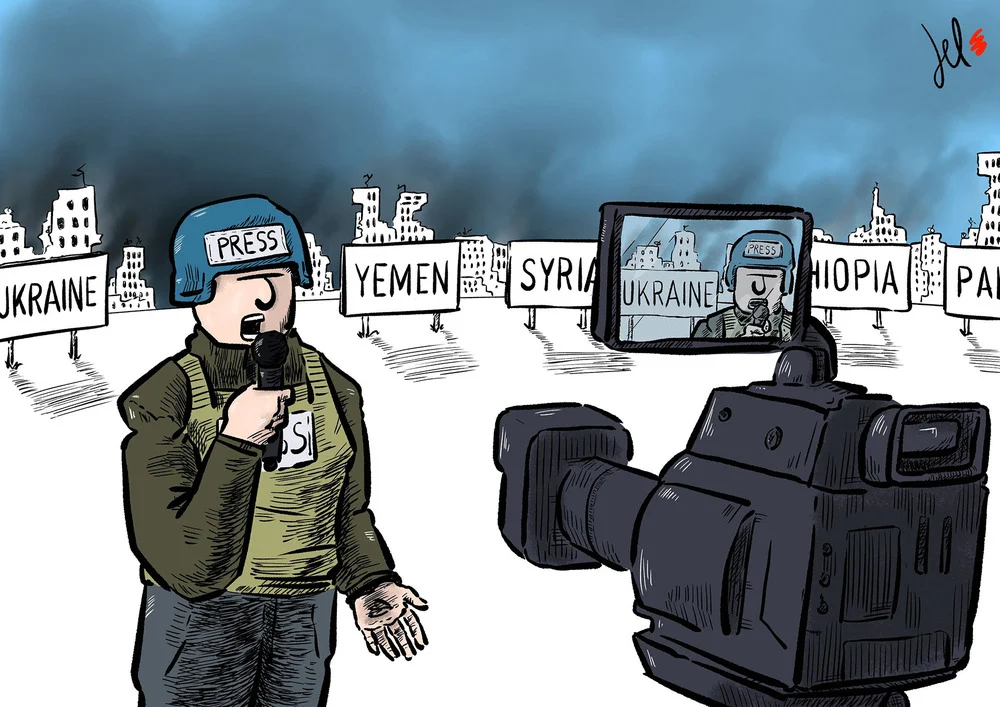
As near-record levels of funding fill the coffers of the Ukrainian aid response, humanitarian insiders worry that resources may be diverted from other crises that are receiving scant attention and remain badly underfunded – from Afghanistan to Yemen to the Horn of Africa.
Numerous factors are contributing to the unusually generous outpouring for Ukraine: the huge geopolitical significance and economic fallout of the Russian invasion; the sheer speed and scale of the displacement crisis; not to mention the 24/7, wall-to-wall media coverage.
But some also see double standards, even elements of racism, in the lopsided levels of assistance going to Ukraine compared to other crises raging around the world.
Meanwhile, those coordinating international aid efforts are confronted by a growing gap between funding and needs, a bleak donor outlook, and the risk that the war in Ukraine is turbocharging a global food and cost-of-living crisis.
The United States announced on 24 March that it is donating $1 billion to help countries in Europe absorb refugees from Ukraine. That’s on top of the $1.5 billion pledged by donor states to support humanitarian efforts in Ukraine and neighbouring countries at a funding conference earlier this month. “This is among the fastest and most generous responses a humanitarian flash appeal has ever received,” UN spokesperson Stéphane Dujarric told journalists after the Geneva gathering.
That outcome sits in stark contrast to last week’s pledging conference for Yemen, where donors raised less than a third of the $4.3 billion the UN deemed necessary to respond to one of the world’s largest and most complex humanitarian emergencies.
In Yemen, crippled basic services and a collapsed economy have left an estimated 20.7 million people (more than two thirds of the population) in need of urgent assistance – amid escalating conflict involving numerous different actors.
After the Yemen pledging event, the UN’s top humanitarian, Martin Griffiths, noted his “disappointment”. Jan Egeland, head of the Norwegian Refugee Council, was more explicit: “The people of Yemen need the same level of support and solidarity that we’ve seen for the people of Ukraine.”
It’s not just Yemen that’s receiving a fraction of what it needs from the world’s richest nations. Humanitarian crises are spiralling out of control in many parts of the globe: Afghanistan, where international sanctions on the Taliban have cut off a large proportion of the usual assistance even as the economy and healthcare systems collapse; the Horn of Africa, which risks slipping almost unnoticed towards famine; Ethiopia, where the epicentre of conflict has moved from Tigray to the Afar region; and post-coup Myanmar, where critics of international inaction have described an “aid void”.
For those trying to conduct a coordinated global aid response, the worry is that oversized attention on Ukraine will suck resources – both financial and human – from other crises that are already facing unprecedented funding shortages.
Ukraine has also received almost three times as much as the next highest recipient of the UN’s rapid response funding mechanism, with $60 million going towards its appeal.
“If we care so much about people suffering in Ukraine, we should care as much about people in [places like] Somalia, Burkina Faso, South Sudan, Pakistan, where the scale of need is high,” Gareth Price-Jones, executive secretary of the Steering Committee for Humanitarian Response, an alliance of international aid groups, told The New Humanitarian. “It’s so frustrating that [other countries] don’t get the level of support they’re entitled to. We’re struggling because [they] don’t have the same geopolitical element to [them].”
Even before the Russian invasion of Ukraine, these funding shortages were leading to curtailed programmes and cut rations in responses around the world.
Despite relatively high levels of donor contributions in 2021 – 46 percent of requirements met – the $20.5 billion gap to what was needed was still the largest ever.
That gap only looks likely to grow. Donor states who took on debt to boost their social services during the pandemic are now facing runaway inflation and a cost-of-living crisis – with everything from the price of gas at the pump to basic foodstuffs going through the roof.
Since the start of the Russian invasion, there has been a near-constant barrage of Western media coverage of the conflict, which clearly drives generosity among private citizens, even if experts believe its effect on donor governments is more limited.
On March 2, the day after the UN appeal was launched, 20 of the 22 stories on the BBC’s “World” page were related to Russia and Ukraine. It wasn’t alone. On the same day, Ukraine coverage took up the first eight stories on Al Jazeera’s homepage, and all six of its opinions.
Citizens have certainly responded, digging into their pockets despite the uncertain economic times to amass vast levels of private donations for Ukraine.
All kinds of donations are popping up: from the more than $54.7 million donated in crypto-assets, to people booking and paying for $15 million worth of phantom lodging on Airbnb to inject fast cash into the hands of Ukrainians. College students have developed lodging apps, and celebrities are in the mix as well – a GoFundMe campaign started by Ashton Kutcher and Mila Kunis, who was born in Ukraine, has raised over $35 million.
Such aid largesse isn’t unheard of. Certain high-profile emergencies have generated overwhelming solidarity and private giving in the past.
The 2004 Southeast Asian tsunami response is the most striking case in point: Near-non-stop media coverage and its timing around Christmas spurred unprecedented levels of generosity, so much so that some groups had to turn off the faucet because it was too much for them to actually spend.
Aid groups and governments are urging well-intentioned people to send cash rather than shipping and trucking stuff – clothing, blankets, and teddy bears – from afar. Poland has specifically requested this kind of giving stops, as the “unloading, storage, selection and distribution procedure – generates disproportionate amounts of additional work and cost”.
But in addition to the onslaught of media attention, experts note that there’s a mix of influences driving the generosity; a “big ecosystem” of factors, as Kate Wright, a fellow in media and communication at the University of Edinburgh, told The New Humanitarian.
“In almost all cases, the allocation of humanitarian aid to one crisis and not another is driven by a combination of humanitarian concerns, levels of unmet need, and political concerns… [in other words] strategic relevance,” said Martin Scott, senior lecturer in media and international development at the University of East Anglia, referring to institutional donor behaviour.
Scott noted that while “the media is encouraging us to care and feel…, facilitating those donations” at an individual level, it is geopolitics driving donor states’ aid allocations to Ukraine. “It’s one of the fastest refugee crises in a long time,” he explained. “There are huge amounts of unmet humanitarian need. And refugees are literally going straight into the countries of some of the biggest humanitarian donors.”
- The New Humanitarian
